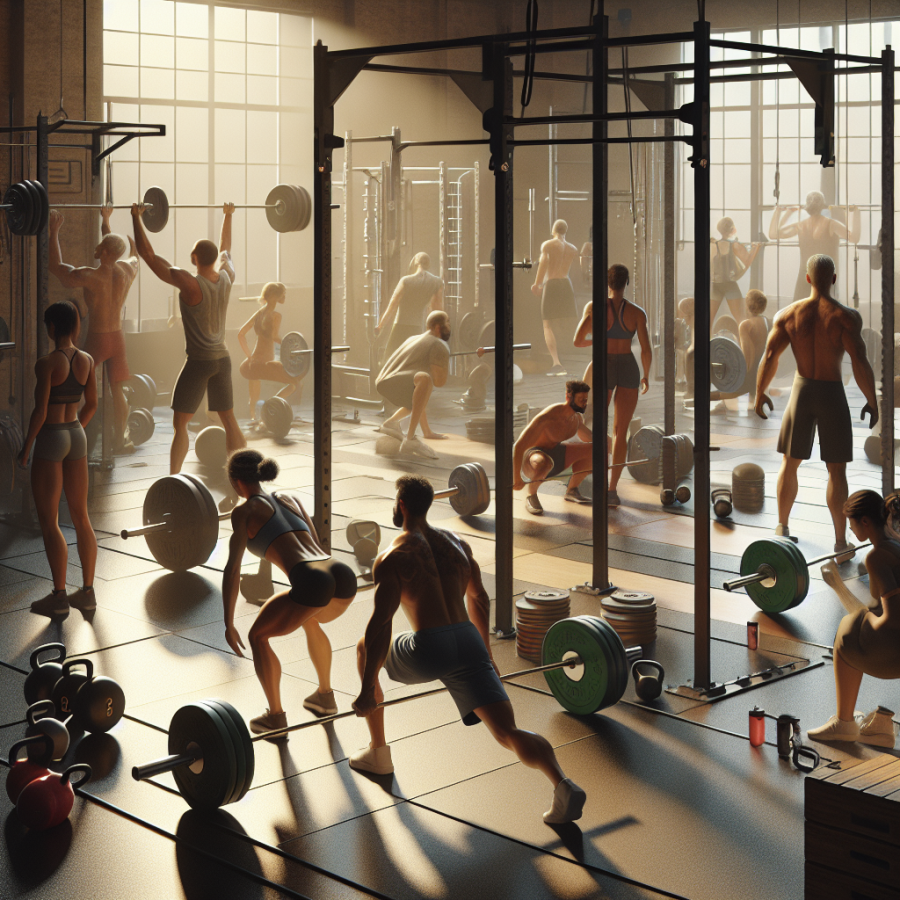Powerlifting Technique Mastery: Building Strength and Minimizing Injury
As a subsection dedicated to powerlifting technique mastery under the main article topic of maximizing muscle through powerlifting essentials, it's fundamental to delve into the specifics of how to build strength while minimizing the risk of injury through proper technique.
Powerlifting is comprised of three primary lifts: the squat, bench press, and deadlift. Each lift requires meticulous attention to form to ensure safety and effectiveness.
**Squat Technique:**
The squat is a complex movement that engages the entire body. To start, position your feet shoulder-width apart, with toes slightly pointed out. While keeping your back straight, initiate the movement by sitting back and down as if you are lowering onto a bench. Keep your knees aligned with your toes, and ensure they do not cave inward. Descend until your hip joint is lower than your knees, if mobility allows, and then drive upwards through your heels, maintaining a tight core and a strong posture throughout the movement. Mastering the depth and maintaining the proper back alignment can significantly reduce the risk of knee and lower back injuries.
**Bench Press Technique:**
For the bench press, lie on the bench with your eyes under the barbell. Grip the bar slightly wider than shoulder-width, and plant your feet firmly on the ground. Before lifting the bar, squeeze your shoulder blades together to create a stable base, then unrack the weight. Lower the bar to your mid-chest while keeping your elbows at a 45-degree angle from your sides. Press the bar up and slightly back towards the rack. A controlled path and stable scapular placement are critical for shoulder health and power generation during this lift.
**Deadlift Technique:**
Finally, in the deadlift, stand with your mid-foot under the barbell, hip-width apart. Bend at the hips to grip the bar, with your hands just outside your legs. Keep your spine neutral by locking in your core and puffing out your chest. As you start the lift, push the ground away with your legs while keeping the bar close to your body, leading with your hips and shoulders rising at the same time. Lock out at the top with your chest up and shoulders back without overextending your lower back. Proper deadlift form is crucial for avoiding lumbar injuries and developing a strong posterior chain.
Beyond these lift-specific tips, it's essential to understand the mechanics of each movement and how they translate to muscle growth and strength development.
Read also:
Mastering the Ice: Inside the World of Competitive Figure Skating
Essential Gear for Every Powerlifter: Elevating Your Performance
Maximizing your performance in powerlifting requires not only steadfast commitment and rigorous training but also the right gear to support, protect, and enhance your efforts under the bar. With each piece of equipment uniquely tailored to aid your lifting journey, it's essential to understand how they contribute to your overall progression and safety.
When it comes to foundational gear, a high-quality powerlifting belt should be top of the list. This indispensable tool helps to increase intra-abdominal pressure, providing the much-needed support to your core during heavy lifts like squats and deadlifts. A good belt should be made of durable leather, at least 10mm thick and 4 inches wide, with a solid buckle to ensure it stays firmly in place during your lifts.
Along with a solid belt, knee sleeves or knee wraps are crucial for a powerlifter’s safety and performance. Knee sleeves offer warmth and compression, helping to increase blood flow and reduce pain and swelling during and after workouts. On the other hand, knee wraps provide more robust support, allowing for greater rebound out of the hole in a squat. They can be particularly beneficial when lifting at maximum effort.
Equally important are wrist wraps, which provide wrist support, especially when handling heavy weights during bench presses. By stabilizing the wrist joint, they reduce the risk of injuries and can help improve your grip and confidence when pushing against heavy resistance.
When it comes to footwear, powerlifting shoes come with a non-compressible sole that ensures stability and a better transfer of force during squats, deadlifts, and bench press. Some lifters prefer a raised heel for an improved range of motion in the squat, while others opt for a flat sole, particularly for deadlifts, to minimize the distance the bar must travel.
Chalk is another staple in a powerlifter's arsenal, used to enhance grip by absorbing sweat and reducing moisture on the hands. Whether in block form or liquid, it is an inexpensive yet effective way to improve your hold on the barbell and reduce the likelihood of slipping during a lift.
Lifting straps also aid in grip, particularly for those with smaller hands or when grip strength starts to fail during high-volume or heavy deadlift sessions. However, it's important to use straps judically, as over-reliance can lead to a neglect in developing grip strength.
Powerlifting briefs or singlets are not necessarily for daily training but are often required for competitions.




